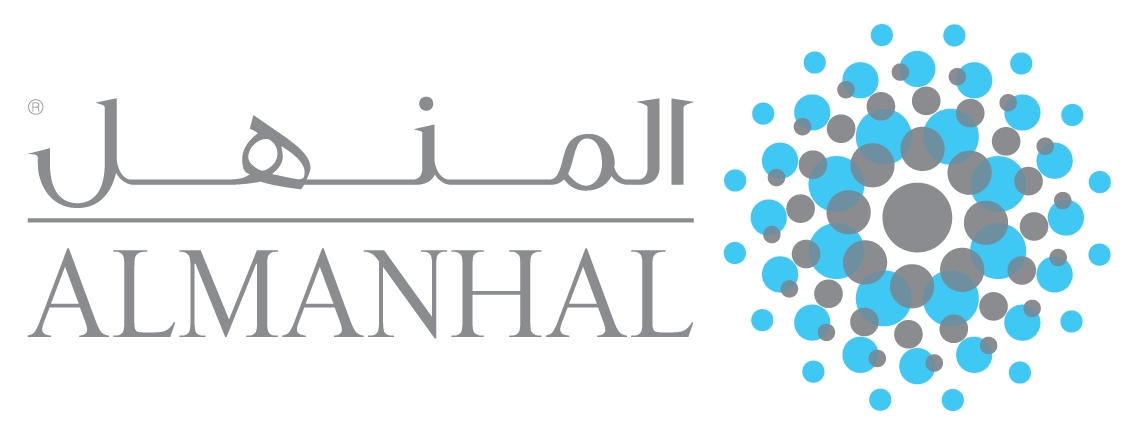Determinants of Maturity Transformation Risk in Islamic Banks: A Perspective Of Basel III Liquidity Regulations
DOI:
https://doi.org/10.31436/jif.v6i0.263Keywords:
Basel III, Islamic banking, Maturity transformation risk, Net stable funding ratio.Abstract
Maturity transformation risk is highlighted as one of the major causes of recent global financial crisis. Basel III has proposed new liquidity regulations for transformation function of banks and hence to monitor this risk. Specifically, net stable funding ratio (NSFR) is introduced to enhance medium- and long-term resilience against liquidity shocks. Islamic banking is widely accepted in many parts of the world and contributes to a significant portion of the financial sector in many countries. Using a data-set of 68 fully fledged Islamic banks from 11 different countries, over a period from 2005 – 2014, this study attempts to analyze various factors that may significantly affect the maturity transformation risk in these banks. We utilize a 2-step system GMM estimation technique on unbalanced panel and find bank capital, credit risk, financing, size and market power as significant bank specific factors in determining maturity transformation risk. Furthermore, gross domestic product and inflation are found to be the significant macroeconomic factors that influence this risk. However, we find no evidence for the effect of bank profitability, cost efficiency and income diversity on maturity transformation risk in Islamic banking system.
Downloads
References
Al-Khouri, R. (2012). Bank Characteristics and Liquidity Transformation: The Case of GCC Banks. International Journal of Economics and Finance, 4(12), p114.
Allen, F., & Gale, D. (2004). Competition and financial stability. Journal of Money, Credit and Banking, 453-480.
Alman, M., & Oehler, A. (2012). Liquidity Transformation Factors of Islamic Banks: An Empirical Analysis.
Altunbas, Y., Manganelli, S., & Marques-Ibanez, D. (2011). Bank risk during the financial crisis: do business models matter?: Citeseer.
Anderson, T. W., & Hsiao, C. (1982). Formulation and estimation of dynamic models using panel data. Journal of econometrics, 18(1), 47-82.
Angora, A., & Roulet, C. (2011). Transformation risk and its determinants: A new approach based on the Basel III liquidity management framework. Universite de Limoges.
Arellano, M., & Bond, S. (1991). Some tests of specification for panel data: Monte Carlo evidence and an application to employment equations. The review of economic studies, 58(2), 277-297.
Arellano, M., & Bover, O. (1995). Another look at the instrumental variable estimation of error-components models. Journal of econometrics, 68(1), 29-51.
Aspachs, O., Nier, E., & Tiesset, M. (2005). Liquidity, Banking Regulation and the Macroeconomy. Evidence on bank liquidity holdings from a panel of UK-resident banks. Unpublished manuscript. BIS.
Audretsch, D. B., & Elston, J. A. (2002). Does firm size matter? Evidence on the impact of liquidity constraints on firm investment behavior in Germany. International Journal of Industrial Organization, 20(1), 1-17.
Bacha, O. I. (2008). The Islamic inter bank money market and a dual banking system: the Malaysian experience. International Journal of Islamic and Middle Eastern Finance and Management, 1(3), 210-226.
BCBS. (2014). Basel III: Net Stable Funding Ratio. http://www.bis.org/bcbs/publ/d295.pdf
Berger, A. N., & Bouwman, C. H. (2009). Bank liquidity creation. Review of Financial Studies, 22(9), 3779-3837.
Berger, A. N., Miller, N. H., Petersen, M. A., Rajan, R. G., & Stein, J. C. (2005). Does function follow organizational form? Evidence from the lending practices of large and small banks. Journal of Financial economics, 76(2), 237-269.
Bhattacharya, S., & Thakor, A. V. (1993). Contemporary banking theory. Journal of financial Intermediation, 3(1), 2-50.
BIS. (2009). Strengthening the resilience of the banking sector. Consultative document, BIS, December.
Blundell, R., & Bond, S. (1998). Initial conditions and moment restrictions in dynamic panel data models. Journal of econometrics, 87(1), 115-143.
Bonfim, D., & Kim, M. (2012). Liquidity risk in banking: is there herding? European Banking Center Discussion Paper (2012-024).
Bordo, M., Eichengreen, B., Klingebiel, D., & Martinezâ€Peria, M. S. (2001). Is the crisis problem growing more severe? Economic policy, 16(32), 51-82.
Boyd, J. H., Hanweck, G., & Pithyachariyakul, P. (1981). Bank holding company diversification: Banking Research Center, Graduate School of Management, Northwestern University.
Brown, K., Hassan, M. K., & Skully, M. (2007). Operational efficiency and performance of Islamic banks. Handbook of Islamic banking, 96.
Brunnermeier, M. K., Dong, G. N., & Palia, D. (2012). Banks’ non-interest income and systemic risk Symposium conducted at the meeting of the AFA 2012 Chicago Meetings Paper
Bryant, J. (1980). A model of reserves, bank runs, and deposit insurance. Journal of Banking & Finance, 4(4), 335-344.
Bunda, I., & Desquilbet, J.-B. (2008). The bank liquidity smile across exchange rate regimes. International Economic Journal, 22(3), 361-386.
Busch, R., & Kick, T. (2009). Income diversification in the German banking industry: Dt. Bundesbank.
Calomiris, C. W., & Kahn, C. M. (1991). The role of demandable debt in structuring optimal banking arrangements. The American Economic Review, 497-513.
Choi, I. (2001). Unit root tests for panel data. Journal of international money and Finance, 20(2), 249-272.
Coval, J. D., & Thakor, A. V. (2005). Financial intermediation as a beliefs-bridge between optimists and pessimists. Journal of Financial Economics, 75(3), 535-569.
Crowe, K. (2009). Liquidity risk management–more important than ever. Harland Financial Solutions, 3.
Deep, A., & Schaefer, G. (2004). Are banks liquidity transformers?
Delechat, C. C., Arbelaez, C. H., Muthoora, M. P. S., & Vtyurina, S. (2012). The Determinants of Banks' Liquidity Buffers in Central America: International Monetary Fund.
Demirgüç-Kunt, A., & Huizinga, H. (2010a). Are banks too big to fail or too big to save? International evidence from equity prices and CDS spreads.
Demirgüç-Kunt, A., & Huizinga, H. (2010b). Bank activity and funding strategies: The impact on risk and returns. Journal of Financial Economics, 98(3), 626-650.
DeYoung, R., & Roland, K. P. (2001). Product mix and earnings volatility at commercial banks: Evidence from a degree of total leverage model. Journal of Financial Intermediation, 10(1), 54-84.
Diamond, D. W., & Dybvig, P. H. (1983). Bank runs, deposit insurance, and liquidity. The journal of political economy, 401-419.
Diamond, D. W., & Rajan, R. G. (1999). Liquidity risk, liquidity creation and financial fragility: A theory of banking: National bureau of economic research.
Diamond, D. W., & Rajan, R. G. (2001). Liquidity Risk, Liquidity Creation, and Financial Fragility: A Theory of Banking. Journal of Political Economy, 109(2).
Diamond, D. W., & Rajan, R. G. (2011). Fear of fire sales, illiquidity seeking, and credit freezes. The Quarterly Journal of Economics, 126(2), 557-591.
El Tiby, A. (2010). The nature of risk. Opinion: Risky Business, Dalam IBF, 610.
Farahani, Y. G., & Dastan, M. (2013). Analysis of Islamic banks' financing and economic growth: a panel cointegration approach. International Journal of Islamic and Middle Eastern Finance and Management, 6(2), 156-172.
FungáÄová, Z., Weill, L., & Zhou, M. (2010). Bank capital, liquidity creation and deposit insurance. BOFIT Discussion Papers, Bank of Finland, 17(10).
Garber, P. M., & Weisbrod, S. R. (1992). The Economics of Banking, Liquidity, and Money: DC Heath.
Gatev, E., Schuermann, T., & Strahan, P. E. (2009). Managing bank liquidity risk: How deposit-loan synergies vary with market conditions. Review of Financial studies, 22(3), 995-1020.
Gavin, M., & Hausmann, R. (1996). The roots of banking crises: the macroeconomic context: Working Paper, Inter-American Development Bank, Office of the Chief Economist.
Gorton, G., & Winton, A. (2000). Liquidity provision, bank capital, and the macroeconomy: University of Minnesota working paper.
Halling, M., & Hayden, E. (2006). Bank failure prediction: a two-step survival time approach. IFC Bulletin, 56, 48-73.
Hasan, M., & Dridi, J. (2010). The effects of the global crisis on Islamic and conventional banks: A comparative study: International Monetary Fund.
Holmes, Z., & Kathpalia, S. (2014). Standard & Poor's Islamic Finance Outlook 2014.
Holmström, B., & Tirole, J. (1998). Private and public supply of liquidity. Journal of Political Economy, 106(1), 1-40.
Horvath, R., Seidler, J., & Weill, L. (2012). Bank capital and liquidity creation: Granger-causality evidence. Journal of Financial Services Research, 1-21.
Iannotta, G., Nocera, G., & Sironi, A. (2007). Ownership structure, risk and performance in the European banking industry. Journal of Banking & Finance, 31(7), 2127-2149.
ICD, & REUTERS, T. (2015). Islamic Finance Development Report 2015: Global Transformation.
Iqbal, M., & Molyneux, P. (2005). Thirty Years of Islamic Banking: History, Performance, and Prospects.
Ismal, R. (2008). Shariah Issues in Liquidity Risk Management: A Survey. Review of Islamic Economics, 12(2), 45-66.
Judson, R. A., & Owen, A. L. (1999). Estimating dynamic panel data models: a guide for macroeconomists. Economics letters, 65(1), 9-15.
Kashyap, A. K., Rajan, R., & Stein, J. C. (2002). Banks as liquidity providers: An explanation for the coexistence of lending and depositâ€taking. The Journal of Finance, 57(1), 33-73.
Kerr, S. (2007, June, 8). DIFC raises $1.25bn via sukuk. Financial Times.
Khan, F. (2010). How ‘Islamic’is Islamic Banking? Journal of Economic Behavior & Organization, 76(3), 805-820.
Khan, T., & Ahmed, H. (2001). Risk management: an analysis of issues in Islamic financial industry: Islamic Development Bank, Islamic Research and Training Institute.
Lee, C.-C., & Hsieh, M.-F. (2013). The impact of bank capital on profitability and risk in Asian banking. Journal of international money and finance, 32, 251-281.
Munteanu, I. (2012). Bank liquidity and its determinants in Romania. Procedia Economics and Finance, 3, 993-998.
Office of Comptroller of the Currency. (2001). Liquidity: Comptroller's Handbook, Office of the Comptroller of the Currency. Retrieved February,
Painceira, P. J. (2010). The Role of Banks in the Korean Financial Crisis of 1997: An Interpretation Based on the Financial Instability Hypothesis. Research on Money and Finance.
Petersen, M. A., & Rajan, R. G. (1995). The effect of credit market competition on lending relationships. The Quarterly Journal of Economics, 407-443.
Rauch, C., Steffen, S., Hackethal, A., & Tyrell, M. (2008). Determinants of bank liquidity creation-evidence from savings banks: Working Paper.
Rauch, C., Steffen, S., Hackethal, A., & Tyrell, M. (2009a). Determinants of bank liquidity creation.
Rauch, C., Steffen, S., Hackethal, A., & Tyrell, M., &. (2009b). Savings Banks, Liquidity Creation and Monetary Policy: Working Paper Series.
Roodman, D. (2006). How to do xtabond2: An introduction to difference and system GMM in Stata. Center for Global Development working paper(103).
Roodman, D. (2009). A note on the theme of too many instruments*. Oxford Bulletin of Economics and Statistics, 71(1), 135-158.
Rosly, S. A., Ayub, M., Toutounchian, I., Hasan, Z., & Al-Zuhayli, W. (2005). CRITICAL ISSUES ON ISLAMIC BANKING AND FINANCIAL.
Roulet, C. (2011). Empirical essays on bank liquidity creation and maturity transformation risk: implications for prudential regulation. Université de Limoges.
Saunders, A., & Cornett, M. M. (2007). Financial markets and institutions: an introduction to the risk management approach: McGraw-Hill.
Shen, C.-H., Chen, Y.-K., Kao, L.-F., & Yeh, C.-Y. (2009). Bank liquidity risk and performance. Department of Finance: National University of Kaohsiung.
Smith, A. (1776). The Wealth of Nations (New York: Modern Library, 1937). Originally published, 3.
Tesfaye, R. (2012). The Link between Financial Development and Economic Growth In Ethiopia. Addis Ababa University.
Van Greuning, H., & Bratanovic, S. B. (2009). Analyzing banking risk: a framework for assessing corporate governance and risk management: World Bank Publications.
Vodová, P. (2011). Liquidity of Czech commercial banks and its determinants. International Journal of Mathematical Models and Methods in Applied Sciences, 5(6), 1060-1067.
Vodová, P. (2013). Determinants of Commercial Bank Liquidity in Hungary. Finansowy Kwartalnik Internetowy e-Finanse, 9(3), 64-71.
Von Thadden, E.-L. (1999). Liquidity creation through banks and markets: Multiple insurance and limited market access. European Economic Review, 43(4), 991-1006.
Windmeijer, F. (2005). A finite sample correction for the variance of linear efficient two-step GMM estimators. Journal of econometrics, 126(1), 25-51.
Yeager, F. C., & Seitz, N. E. (1989). Financial Institution Management: Text and Cases: Prentice Hall.
Zhou, C. (2010). Are banks too big to fail? Measuring systemic importance of financial institutions. International Journal of Central Banking, 6(4), 205-250.












